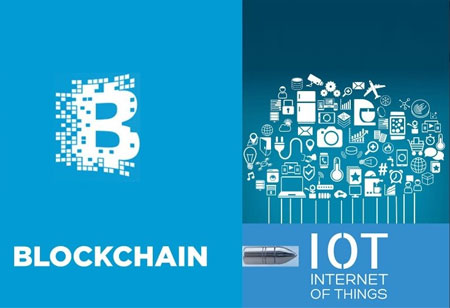THANK YOU FOR SUBSCRIBING
Internet of Things and Blockchain in Action
With the introduction of the internet of things (IoT), physical devices such as industrial or household appliances, electronics, and other gadgets along with vehicles...

By
Apac CIOOutlook | Thursday, January 01, 1970
Stay ahead of the industry with exclusive feature stories on the top companies, expert insights and the latest news delivered straight to your inbox. Subscribe today.
With the introduction of the internet of things (IoT), physical devices such as industrial or household appliances, electronics, and other gadgets along with vehicles are already being connected to each other. Significantly, this revolutionary concept has resulted in enhanced connectivity of the gadgets and appliances through software, sensors, as well as firmware.
While staying connected to the internet, these devices are capable of sharing information on a real-time basis with different systems in order to enhance efficiency and productivity, along with providing economic profits and reducing human intervention.
IoT devices had a noticeable increase of 31 percent in 2017 with the number amounting to almost 8.4 billion. By 2020, the figure is predicted to surpass the mark and reach over 30 billion. This implies that the global value of IoT devices in 2020 rises to $7.1 trillion. White goods, for example, the common electrical devices such as washing machines, vacuum cleaners, refrigerators, and water purifiers are being incorporated with modern sensors and microprocessors whose IoT compatibility helps users achieve superior results.
Experts have now conceptualized the alliance of IoT with blockchain.
How will this be fruitful for business organizations?
With blockchain combined with IoT, organizations, as well as households, could be introduced to an entirely new dimension of possibilities—most of them are related to securing devices and enhancing daily living standards. This will be helpful in realizing the undiscovered potential of IoT, according to technology enthusiasts.
For instance, water purifiers activated with IoT leverage microprocessors to evaluate the quality of the water and arrange for the water treatment cycle as required. To elaborate, if the water quality is low, the processor configures the device to undertake a longer treatment with the aid of the purifying cartridges. However, there remains a catch. Once the treatment is complete, the processor lies idle. Experts are working on utilizing this power in a more efficient manner.
As the inter-connectivity of household devices increases and upgrades with time, the standard process of mining can be a huge boost to the routine lifestyle. Mining involves working out a mathematical situation in order to generate crypto coins while verifying the ongoing network transactions. Controlling a number of processors enabled in white goods can lead to a game-changing way of keeping blockchain limitations in check. Blockchain provides a decentralized storage environment for users to host data that is generated by IoT devices. Owners of IoT-enabled devices can sell data to parties who are compliant with GDPR law and relevant regulations.





